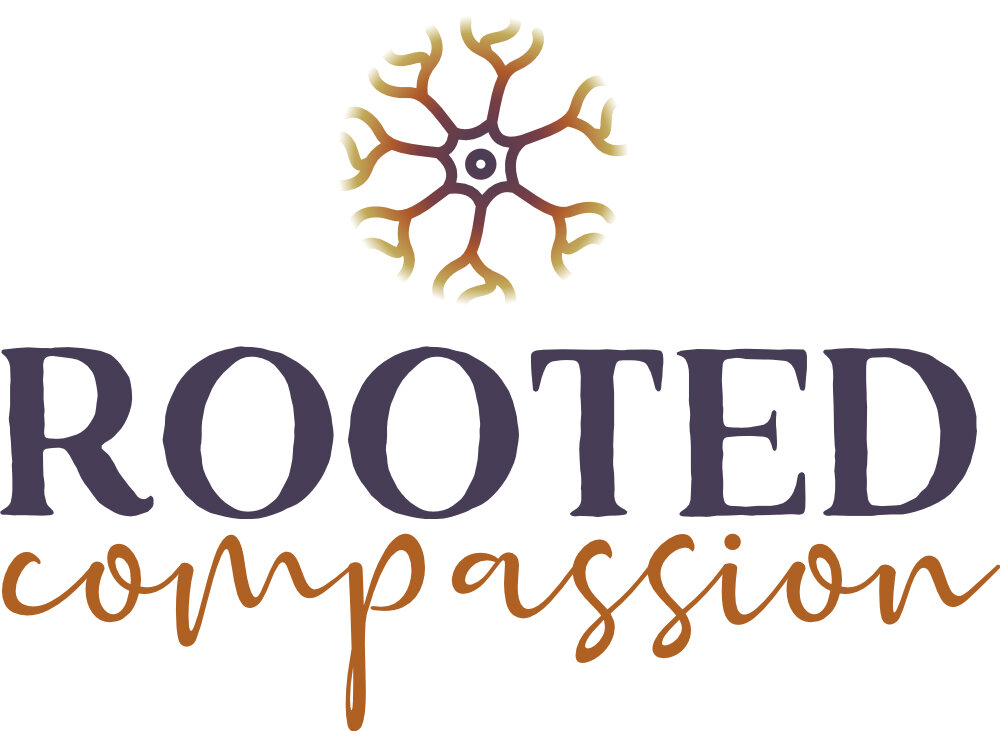
Blog

Cincinnati Therapist Explores Safe Connection for the Holidays and New Year
Cincinnati therapist, Julie Koloc, discusses how she explores safe connections for the holidays and New Year.

Cincinnati Counselor in Training Explores Using Mindfulness to Overcome Imposter Syndrome
Cincinnati counselor in training, Brandon Mueller, discusses how he uses Mindfulness to overcome Imposter Syndrome.

Finding Balance in Therapy with "The Three Gunas": Part Three in the series About Applied Polyvagal Theory in Therapeutic Yoga
Cincinnati therapist, Megan Kopack, discusses how she implements yogic concepts into her practice with clients.

Cincinnati Therapist Finds Comfort in the Winter Months and Other Challenging Times
Cincinnati therapist, Kimber Andrews, discusses ways she finds comfort during the winter months, and other challenging times.

Cincinnati Therapist Explores How to Process Grief Following the Loss of a Loved One
May this blog bring you a measure of comfort, especially as we enter this Autumn Season with the start of the holidays where our sense of loss is often felt more intensely. Please honor your love and your grief by taking care of you day by day, in the moments, surrounding yourself with all that you find supportive.

The Polyvagal and “Everything” Series: Part II, The Beginning
The blog will be a place where I share stories to help explain how this new theory impacts understanding of nervous system functioning and what it looks like in everyday life.

The Polyvagal and “Everything” Series
The blog will be a place where I share stories to help explain how this new theory impacts understanding of nervous system functioning and what it looks like in everyday life.

Ever Wonder Why Dogs are Present in Therapy? Counselor Trainee Shares How Her Therapy Dog and the Polyvagal Theory Help Her Students
As a counselor in schools, I’ve spent years reading about classroom management strategies, interventions and relationship building activities to increase feelings of connectedness and safety in our students in order to help support their availability for learning.

Cincinnati Therapist Explains How Our Nervous System is Constantly Looking for Safety: Part Two in the Series About Applied Polyvagal Theory in Therapeutic Yoga
In my mind, as a therapist and Polyvagal Theory enthusiast, I often compare neuroception to a home security system within our bodies. If our home security system is set and there are no intruders, there is no reason to be alerted, thus, we can feel safe and protected.

Feeling Stuck in the Ups and Downs of Life? Cincinnati Therapist Offers Five Tips for Developing Mental Health “Sea Legs”
Back when I started my formal training to become a drama therapist, I came across a metaphor comparing the intention of drama therapy to developing “sea legs.” Rather than fighting, denying, or trying to find a way to stop life’s constant ups and downs, the goal is to “help us feel comfortable in the swaying boat in a rough sea, not only to walk on solid ground” (Johnson, 2009, p. 90).

Accessing Quiet for Mental Health: Balancing our Inner- and Outer-Reach for Safety
I recently picked up and began reading Quiet: The power of introverts in a world that can’t stop talking, by Susan Cain. A world that can’t stop talking–this phrase resonates and seems so true in current times. As much as we seem to be compelled to live fully immersed in a world of words, thoughts, and information (and the sharing of it all), we seem equally as overwhelmed by the constant mental commotion. Even when we’re able to turn down the external noise, our own thoughts can continue to consume our inner peace.

Learning to Let Go in Yoga, Therapy and Life: How Relaxing Your Nervous System Will Reap Major Mental Health Benefits
Fast forward 20 years, after countless yoga classes, and becoming a yoga teacher, I am still moving through moments of gripping, focused engagement, and learning to relax in my yoga practice and in life. I bring this embodied experience to my work as a counselor–both deep knowing of what it feels like to be wrapped up in gripping and the liberation that comes from learning relaxation is a possibility. As a counselor in training, my aim is to provide a space for your own explorations.

The Power of the Pause: Mental Health Therapist Gives Five Benefits of Taking a Break
Pause. A temporary stopping or slowing down, in order to rest, reflect, regroup. This world has been and continues to be a “heavy” place, and just as a marathon runner must pace themselves for the longevity of finishing their race, we also need to pace ourselves to sustain our energy over the lifetime. Pausing regularly can help prevent burnout and compassion fatigue.

Simplifying the Polyvagal Theory, Part 2: Monitoring, Identifying and Regulating your Emotional States Will Lead to Better Mental Health
We move through these states all day every day to differing extents. I might wake and feel socially connected to my family by sharing breakfast or my dog throwing the ball for him. When I start work, I may fall into some level of flee or fight, maybe some anxiety when I see a long list of emails I need to tend to. And if one of those emails has bad news, I might sink into a shutdown. What if, following that, a team member comes into the office and we are able to talk and connect? That would likely ease the shutdown effect and help me move back into feeling connected and emotionally safe.

Therapy Can Be More than Talking: Learn How Applied Polyvagal Theory in Therapeutic Yoga Works and How It Can Benefit You
Simply put, Applied Polyvagal Theory in Therapeautic Yoga is the integration of Polyvagal Theory with the mindfulness, breathwork, postures, and movements associated with yoga.
Through this approach, we are encouraged to integrate the understanding of our nervous system states with sensory awareness. This is done through interoception, exteroception, and proprioception. We are then able to learn how to recognize and respond effectively to various nervous system states, which improves our ability to tolerate distress.

Embracing Suffering by Attending to the Nervous System
Instead of doubting, suppressing, or fighting what we feel, we’re able to choose to attend to our uncomfortable nervous system response--maybe with a calming breath, a shift to a more supportive body position, or by simply placing a hand over our heart.

Four Lessons Learned While Working for a Mental Health Counseling Practice
I do not have a background in mental health.
I don’t have a degree or am educated in the subject whatsoever, however I have been working for a mental health counseling practice for about a year now and want to share some things I have learned. Let me reiterate one last time, that I am no expert, but wanted to share my own personal experience–I have learned so much about the Polyvagal Theory, the vagus nerve, and my nervous system and how it all affects my mental health.

Simplifying the Polyvagal Theory, Part 1: How Being in Touch with Your Nervous System Changes Everything
Someone asked me to write one blog to simplify the Polyvagal Theory. It’s not that easy. This is the first in a series of blogs to explain the Polyvagal Theory, how it affects your nervous system and ultimately your mental health. I share this information through story and weave in the principles of the theory.

Three Simple Steps to Care for Your Vagus Nerve and Nervous System and How Safe and Sound Protocol Can Enhance that Care
It seems society has normalized stress as an unavoidable way of life that we just must deal with. Along with this increased stress there has been a decrease in face-to-face social interaction. According to a 2021 Forbes article, Americans spend 1,300 hours per year on social media which equals a little over 3.5 hours per day. Some people feel that engaging in social media helps to lower (or avoid) the effects of stressful situations. Well, if I can’t use social media to destress, what can I use?

How the Safe and Sound Protocol Breaks Down Your Walls and Leads to More Effective Mental Health Counseling
“Garbage in, garbage out.”
We all know this saying–we have either used it ourselves or have heard others use it. Not only is this saying used in daily life, it is often used in sciences, including neuroscience.
The more time, positivity and effective methods we use to build the foundation of our mental health, the better we will feel and the more connected we will be with others.
